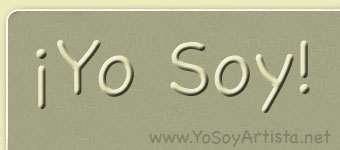 Artist: Nicholas Amoscato
Artist: Nicholas Amoscato
School: North Allegheny
|
Notes:
This is my first composition I created in Reason. As I struggled with learning the new software I tried to create Salvador Dali's famous work, The Persistence of Memory, in music. I created this for Electronic Music.  It was in 1931 that Dali created his most famous work, The Persistence of Memory. Incorporating all of the elements of surrealism, Dali commentates on the irreverence of time. Dali also uses his idea of ‘softness' and ‘hardness' in the painting. The foreground, including four clocks is very dark - a contrast to the peaceful background. The large flexible clocks are placed in a dream-like desolate coastal region in which dark sand is covered by shadow. As the focus moves towards the top of the painting and back, the colors get lighter. A calm, light blue sea is complemented by a golden yellow sky that fades to a rich blue at the top. Finally, a rocky ridge protruding out of the water is located near the top right of the painting. The sun is reflected off each intricate detail. The primary focus of painting is clearly the watches in the foreground. However, I began my piece out in the distant sea, where the disturbed images of the watches are barely visible. Surrounded by an optimistic atmosphere of bright colors, the piece begins with a steady oscillating rhythm - similar to the ticking of a clock. Each clock is represented by a tuned percussive instrument, all within the timbre of a marimba and chime. The simple percussion beat similar to a metronome, represents Time. This steady rhythm stays the same for much of the piece, reminding us that although we can be lost in the thoughts of the painting, reality tells us that Time can never be changed. As the piece approaches the shoreline, Time within the clocks begins to become somewhat unsteady. Divisions of three mixed with divisions of four build to a contrasting B section that begins when the piece crosses into the shadow near the shoreline. The metronome-like beat drops out as one begins to discover what abnormal objects exist on the land. When it is determined that the objects are indeed clocks, a C theme begins accompanied by the same percussive metronome. For the most part, the theme is cheerful, but the melody incorporates a mysterious aspect and like before, time begins to shift. A chromatic progression including many different qualities of chords is somewhat random and builds to a final D section. The D section is clearly the most disturbed theme in the piece. Abnormal minor progressions accompany the original theme's melody played backward. Although the listener may not recognize this approach, I used it as a unique compositional technique. Furthermore, this idea ties the piece together and mimics Salvador Dali's intention of the painting. Time is irrelevant, and through this ‘erasing' of the original melody, I tried to illustrate this idea. In a broad sense, the instruments I used in this composition represent the objects in the painting. There are four different tuned percussion instruments, each representing a melting clock carrying their own rhythm. As I mentioned before, the simple drumbeat represents Time, and stays constant for the majority of the composition. The electronic bass represents the peculiar cloth in the center of the painting. Adding to its mysterious quality, the object has some distinguishable human characteristics. Additionally, there are four sections to the piece; each theme represents one of the four watches. The concept of Time has never been fully grasped. Proving to be an additional dimension, the undefined perception of Time is difficult to comprehend. In Dali's work, Time is unstable. This is reflected in the somewhat incomplete ending of my composition. The sounds simple fade out, leaving the listener with ‘unanswered questions' - much like the concept of Time in our lives today.
|


 Artist: Nicholas Amoscato
Artist: Nicholas Amoscato